A diverse team investigates how aquaculture can help imperiled marine life
The tiny Olympia oyster has played an outsized role in sustaining North America’s West Coast for thousands of years. Beds of the bivalves help stabilize the shoreline, filter water, provide habitat and serve as a nutritious source of protein for wildlife and the Indigenous people who have inhabited the coastline since time immemorial.
But like many mollusks worldwide, the Olympia oyster is in trouble. Pollution, development, non-native predators, climate change and overharvesting dating back to European settlement and the California Gold Rush have driven the species, Ostrea lurida, into local extinction in many areas. In some places, Olympia oyster populations have plummeted to 1% of historic levels.
Now, a team of West Coast shellfish experts is exploring an unconventional approach to boosting Olympia oyster numbers – commercial oyster farming. As one grower put it: Can we eat the Olympia oyster to save it?
Jumpstarting Olympia Oysters’ Recovery
Ranging from British Columbia to Baja California, the Olympia oyster is the West Coast’s lone native oyster species. Technically, it is not endangered. The oyster remains abundant in dense, cluster-like reefs along some parts of the West Coast. But in certain estuaries and bays, particularly in Central California, populations are blinking out.
One of the biggest threats to the species’ survival is low recruitment: Not enough baby oysters are replenishing the system. Some bays and estuaries are isolated by the coastline’s natural geography and currents, preventing spawn from other populations from reaching them. Oyster recruitment in Elkhorn Slough in the heart of California’s Monterey Bay, for example, has remained flat for 12 years. In areas like these, Olympia oysters are unlikely to recover without human intervention.
Enter conservation aquaculture, a relatively new – and somewhat controversial – approach to assisting marine species in decline. Conservation aquaculture involves breeding and raising marine animals in captivity with the goal of supporting wild populations. Under this approach, participating West Coast commercial oyster growers, who largely raise and sell non-native species, add the Olympia oyster to their hatchery line-up. As the oysters grow to market size, the spawn they produce flow into the surrounding waterway, hopefully rebuilding wild populations.

Proponents of conservation aquaculture cite the speed with which it can increase local populations of shellfish, fish or corals through the use of basic aquaculture techniques.
“How do we encourage the production of trillions of baby animals that can spread out and recolonize a degraded ecosystem? You just can’t make that happen unless you have partners that are working in a more commercial-scale space,” said Gary Fleener, staff ecologist at California’s Hog Island Oyster Company.
Fleener is among the members of a team of shellfish experts who recently analyzed the potential of conservation aquaculture to help resurrect the Olympia oyster in places where it has dwindled most dramatically. The team convened people from a diversity of backgrounds: natural resource managers, scientists, shellfish growers and representatives from Indigenous Tribes engaged in Olympia oyster restoration. Although these groups do not often gather at the same table, their common concern for Olympia oysters helped unite them as collaborators.
The team was funded by the Science for Nature and People Partnership, or SNAPP, a joint effort of the Wildlife Conservation Society and The Nature Conservancy, with support from a grant from The David and Lucile Packard Foundation.
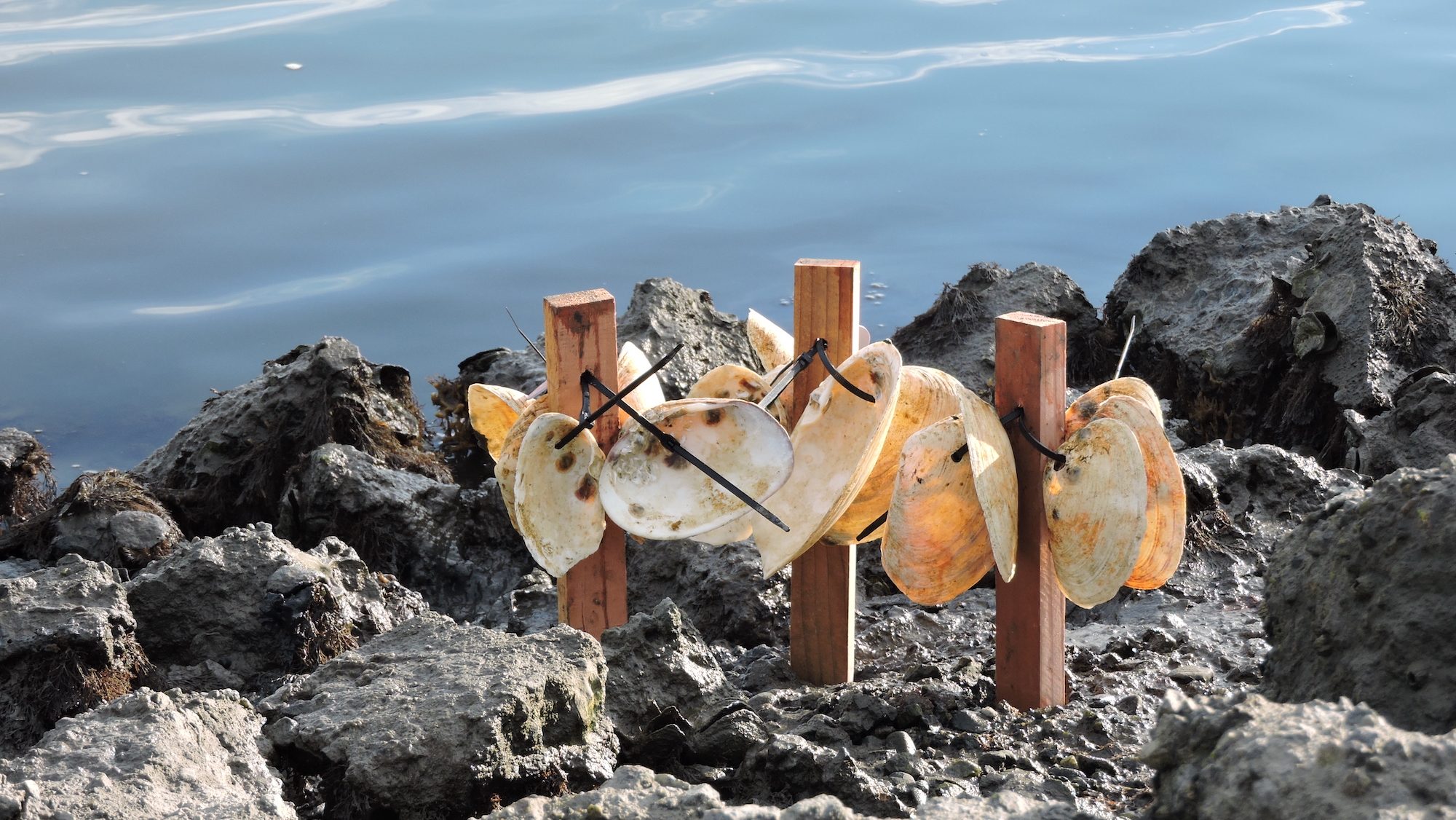
Replenishing Struggling Oyster Reefs
Like seagrasses, kelps and corals, oysters are marine foundation species, organisms that are critical to the structure and resilience of aquatic ecosystems. They create habitat for other kinds of animals, such as young fish and invertebrates, forming the bedrock of entire communities of life.
Globally, oysters are at risk. About 85% of the planet’s oyster reefs have been lost, outpacing coral reef declines. Oysters are especially vulnerable to heatwaves, which are likely to become more frequent and intense with climate change. Because many other animals and plants rely on oysters, their decline can set off a chain of damaging consequences for ecosystems.
At the same time, aquaculture is a swiftly growing industry worldwide, expanding with the global demand for protein. Is there a way to connect aquaculture with declining marine life to achieve conservation goals in timely and targeted ways? This question was at the heart of the SNAPP team’s investigation.
“In creating this team, I saw an opportunity to move the needle forward for the use of conservation aquaculture, not just for native oyster populations, but for other reef-building and marine foundation species as well,” said team leader April Ridlon, a SNAPP postdoctoral researcher at the National Center for Ecological Analysis and Synthesis, a research affiliate of the University of California, Santa Barbara.

Conservation aquaculture is not without risk. Commercial gear and artificial reefs can alter natural habitat, and cultivating and releasing captive species may lead to a decrease in the genetic diversity of their wild counterparts over time. Ridlon, an ecologist, said she initially approached conservation aquaculture with skepticism.
“A lot of people think aquaculture is a dirty word if they’re interested in environmental conservation or ecology. We have some spectacular examples of how aquaculture can be done poorly to the detriment of marine ecosystems,” she said.
Over time, however, Ridlon became convinced that aquaculture, when used in targeted ways, can be a valuable conservation strategy when traditional methods have failed. She likens it to the captive breeding program that helped pull California condors back from the brink – a tool that can help a species that has passed the threshold at which it is capable of recovering on its own.
“We have at least three or four populations of Olympia oysters that are functionally extinct in California,” she said. “In the meantime, they’re facing the effects of climate change, habitat destruction and sedimentation. Conservation aquaculture can be used alongside other measures to give these populations a fighting chance at recovery. It’s a unique tool to rapidly rebuild populations of oysters while we address the things that caused them to decline in the first place.”
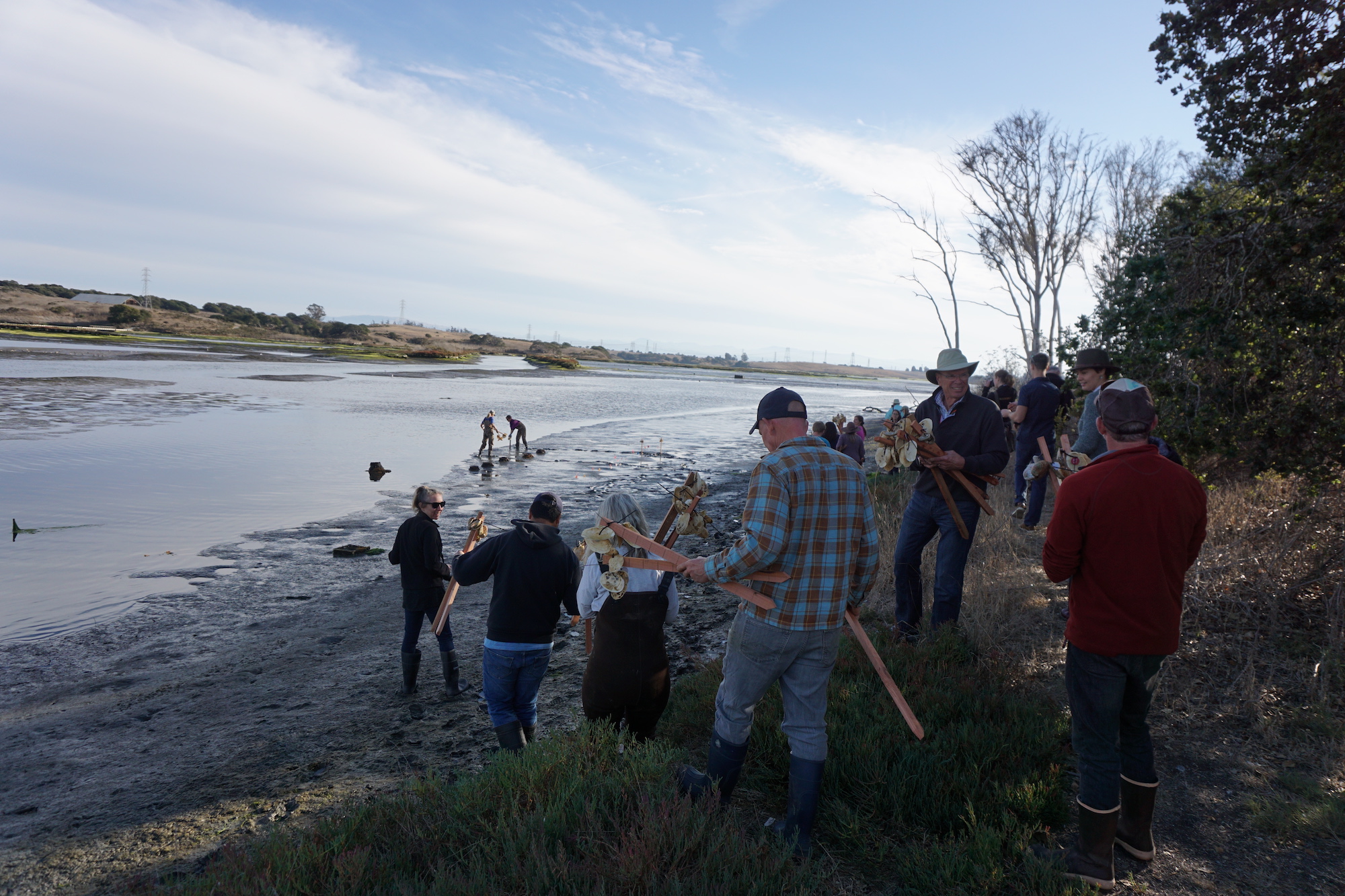
Pinpointing Places Ripe for Conservation Aquaculture
The SNAPP team collaborated to create a set of unique data-driven tools to help decision-makers identify places where the benefits of using conservation aquaculture outweigh the risks and serve both conservation goals and the needs of people. Where could aquaculture provide economic or social benefits – or both?
After designing a decision-making framework, the team applied it across the Olympia oyster’s entire range. Traditional conservation planning often considers each area separately. Taking this range-wide view can reveal locations where conservation aquaculture can support populations in critical need to help the species recover overall, Ridlon said.
In a PLoS ONE study, the group identified 10 priority locations along the West Coast where the rewards of using conservation aquaculture outweigh its potential risks. These locations tended to be estuaries that are geographically isolated, have low recruitment of Olympia oysters and very few adults.
The next steps in the project are identifying bottlenecks to producing Olympia oysters in these locations. The team is zeroing in on three – Tomales Bay, Elkhorn Slough and Morro Bay – and evaluating costs, permitting issues and market demand for Olympia oysters. These next steps are funded by the Supporting Oyster Aquaculture and Restoration initiative, or SOAR, a collaboration between TNC, Pew Charitable Trusts, the U.S. National Oceanic and Atmospheric Administration and the U.S. Department of Agriculture.
The SNAPP group’s tools and process can serve as a model for determining whether conservation aquaculture could be an effective strategy for helping other declining aquatic species, Ridlon said.
Partnering with Industry on Oyster Restoration
Working with commercial oyster growers to help Olympia oysters rebound has been an essential, if unusual, aspect of the SNAPP project. Conservation scientists often view commercial aquaculture operations warily because of their associated risks. Non-native oysters and invasive predatory snails have been accidentally introduced into wild areas of the West Coast due to commercial oyster aquaculture. Introductions like these can pose a threat to native marine life.
Many members of the SNAPP group had previously built relationships with one another as part of their involvement with the Native Olympia Oyster Collaborative, or NOOC. This foundation helped bring together people who share an interest in the oyster and its fate but might otherwise stay siloed from one another, Ridlon said.
Fleener said the SNAPP working group helped move collaboration between commercial growers and natural resource managers from the realm of ideas to actual practice. Fleener works for Hog Island Oyster Company, one of the largest West Coast commercial aquaculture companies to actively raise Olympia oysters.
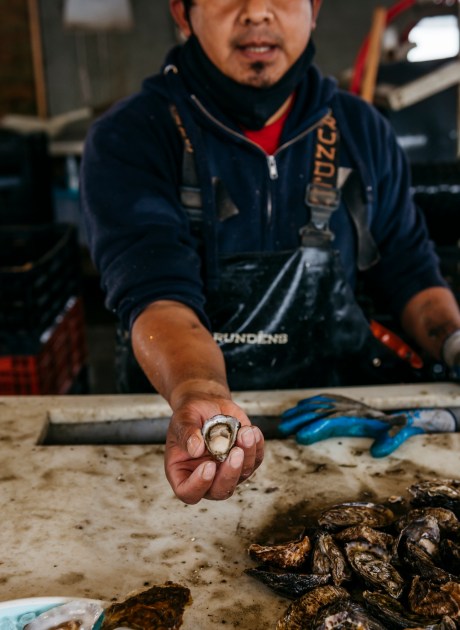
“A lot of the progress that we’re making right now was enabled by the seed funding that was offered to these projects, and SNAPP was an important part of that,” he said. “The funding helped move us from ideas to experiments.”
Hog Island Oyster Company is based in Tomales Bay in the San Francisco area and encompasses a hatchery, nursery, growout farms and multiple restaurants. Today, Olympia oysters are scarce in the wilds of Tomales Bay, but they play a key role in the history of the bay and its earliest inhabitants. As Fleener led chefs on a recent tour of the area, he pointed out a ridge where archaeologists have dated Olympia oyster shells from human-built middens to at least 5,000 years ago – “the bay’s first oyster bar,” Fleener quipped.
“I love to talk about these first and foremost as a wild resource that has been nourishing coastal communities, both human and animal, for tens to hundreds of thousands of years,” he said. “We’re trying to reconnect to that traditional foodway. You can’t tell that story about an oyster from somewhere else.”
Of the 8 million oysters sold by Hog Island per year, only 50,000 are native Olympia oysters. With recent support from the SOAR program, however, the company now has some 350,000 young Olympias, nearly ready for deployment in Tomales Bay.
“This probably represents more native oysters than currently exist in the wild in Tomales Bay,” Fleener said.
Hog Island is also sharing this new Olympia seed with other local farms. Their aim is to blanket the bay with farm-raised oysters whose genetics are close to wild populations to help replenish wild oyster stock.
Over the two or three years it takes to grow an Olympia to market size, it will spawn once or twice.
“All of that larvae is going to just go back into the wild and potentially colonize vacant habitat. So, there’s this huge restorative potential,” Fleener said.
Meanwhile, part of Fleener’s job is to introduce the delicate Olympia oyster to chefs and consumers. He talks up its distinct flavor profile: a savory, celery salt-like taste rich in umami, with a bright coppery note.
Olympia oysters have a small, but important part to play in boosting Hog Island’s resilience to changes in the market, economy and climate, Fleener said. But they’re slow-growing and diminutive compared with other oysters. It takes an Olympia many years to become the size of a silver dollar.
“They’re not going to be a commodity oyster. You have to grow them as a side gig along with a more profitable suite of products,” Fleener said. “There really isn’t a viable commercial motivation for it. It’s a labor of love.”
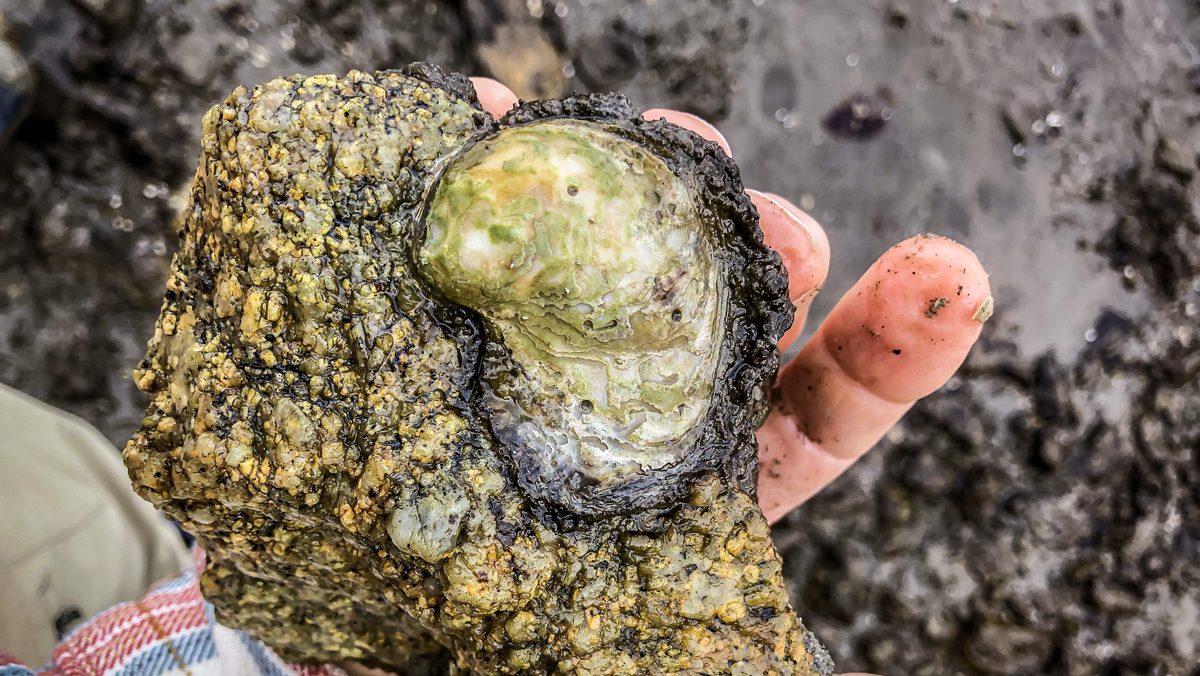
Respecting the Original Stewards of Olympia Oysters
Another goal of the SNAPP group was to incorporate Indigenous knowledge and expertise into restoration planning from the outset. Indigenous Tribal communities have stewarded native oysters for thousands of years, making them natural leaders of conservation efforts, Ridlon said. But academic and natural resource management projects often omit Tribal perspectives and input and implement policies without Tribal consultation – to their cost.
“These are individuals who have lived on the West Coast since time immemorial. You’re never going to be able to tap into that source of information unless you bring them to the table up front,” said Elizabeth Tobin, shellfish program manager for the Jamestown S’Klallam Tribe in Washington and a member of the SNAPP group. “There’s a level of respect in recognizing that Indigenous people are the original stewards of the land.”
The Jamestown S’Klallam and the Swinomish, also a Washington-based Tribe, have been engaged in yearslong projects to restore local Olympia oysters in a state where their numbers are 5% of historic levels. The Jamestown S’Klallam Tribe made the decision to invest time and effort in restoring a historic Olympia oyster bed, of which a small remnant survived, on Tribal tidelands at the head of Sequim Bay, Tobin said. With assistance from Puget Sound Restoration Fund, they collected wild broodstock from the remnant to produce hatchery seed that could be outplanted in the bay. These efforts have been ongoing since 2014, with the population assessed annually.
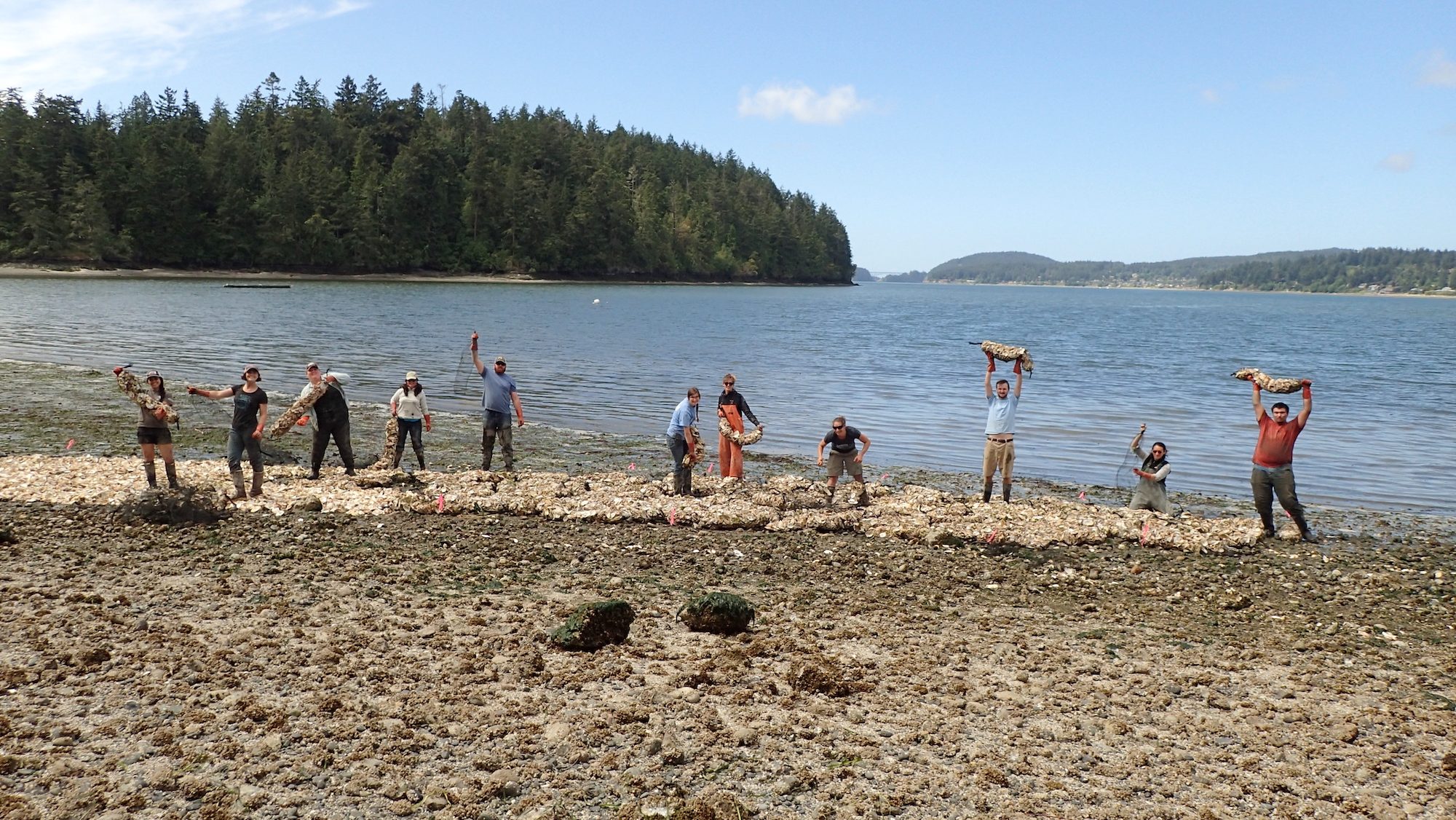
“We’re finding that the Olympia oysters are maintaining themselves in that area, but what’s really cool is that they’re popping up in areas we’ve never seen them.” Tobin said.
In a midden discovered at the Jamestown’s Tribal Headquarters, 40% of shells belonged to Olympia oysters dating back at least 1,100 years, indicating they were a dietary staple. Today, there is no active harvest of remaining oysters on the Tribal tidelands. Instead, the focus is on restoration. While the Jamestown S’Klallam Tribe’s focus is on rebuilding the oyster’s populations, there is also interest in reconnecting Tribal citizens to a traditional food source.
As the SNAPP group developed their model for determining which locations could most benefit from conservation aquaculture, Tobin contributed her expertise as a scientist and a non-Tribal citizen who works with the Jamestown S’Klallam Tribe in helping define ecology and community harvest opportunities.
“What I think was so beneficial about this particular group is it really brought in Tribal representation and made them part of the process,” Tobin said. “Not only is the Olympia oyster a traditional food source, but it’s culturally important to the Tribes.”
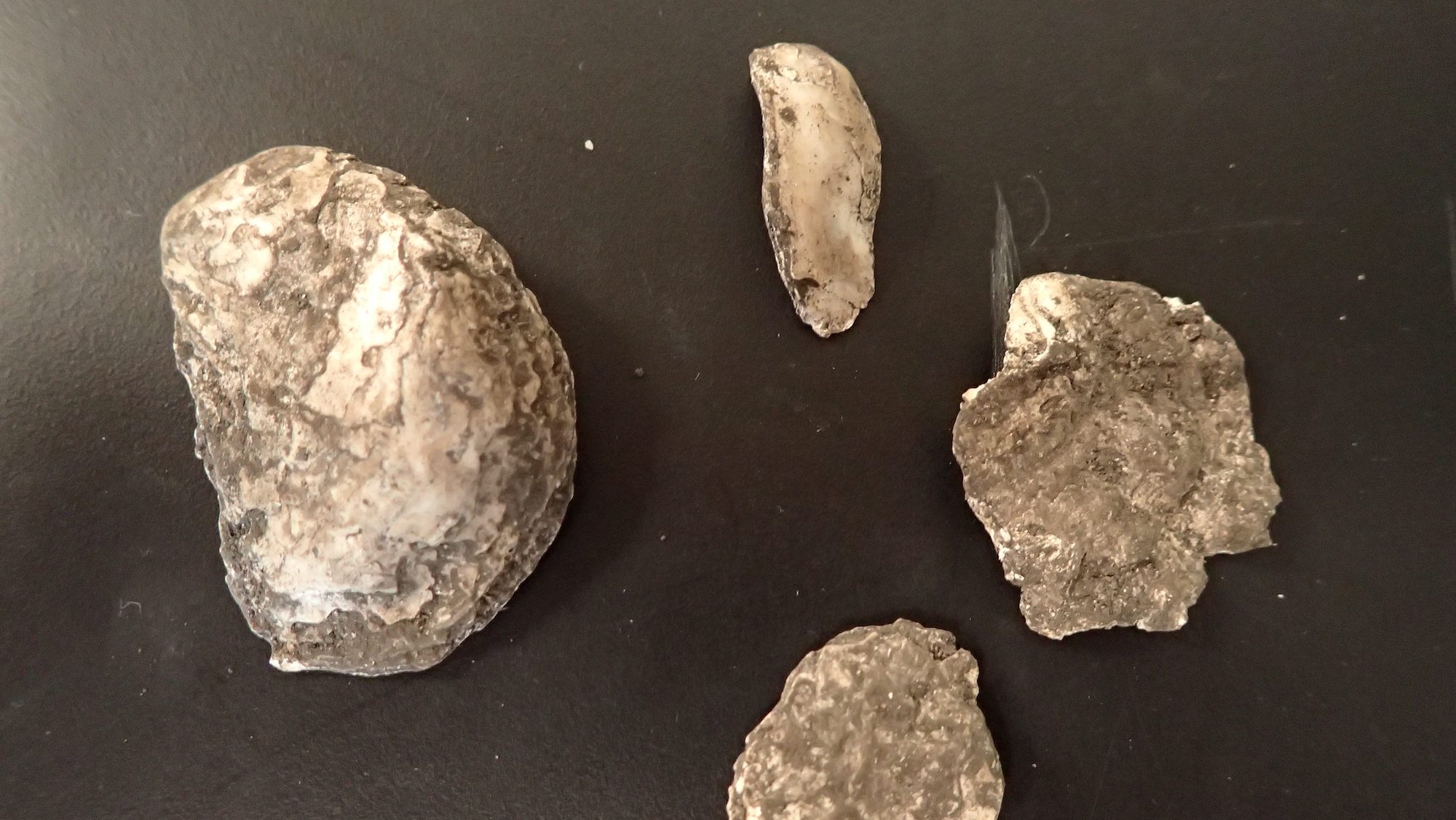
Tribes also approach their projects with millennia’s worth of traditional teachings on how to tend the species, said Joseph Williams, Swinomish shellfish community liaison. Williams has spent nearly his whole life harvesting fish and shellfish from the Salish Sea.
“It’s literally our way of life,” he said. “It’s not just going to the supermarket and grabbing something off the shelf. The salmon, oysters and clams – we consider them our relatives, and we try to be good stewards for them. If we take care of our shorelines, our relatives in the water, they will take care of us.”
Olympia oysters are one of the Swinomish’s first foods – they have been an integral part of the traditional diet and cultural practices for as long as anyone knows. But the last documented living bed of Olympia oysters on Swinomish homeland vanished in the early 1900s.
“We’ve been working towards restoring those habitats and trying to learn from remnant populations that exist nearby,” said Sarah Grossman, environmental specialist for the Swinomish Fisheries Department.

First foods like the Olympia oyster are irreplaceable, said Jamie Donatuto, Swinomish community environmental health analyst and member of the SNAPP team.
“When there’s a species that’s at risk, oftentimes the Western mindset is to say, let’s find a substitute,” she said. “But when you’re talking about first foods, there’s such a complex relationship that doesn’t just have to do with that particular food and harvest preparation and consumption of it, but so many other practices, values and beliefs. It puts so much more importance to the restoration work from the perspective of working for a Tribe.”
Williams pointed to clam gardens as an example of ancient Indigenous technology that can help increase the Tribe’s resilience to a changing climate today. These low-lying rock walls, only visible at extremely low tides, took thousands of years for the Indigenous peoples of the North American Pacific Coast to develop. Sediment builds behind the walls, expanding habitat for various kinds of shellfish and other intertidal wildlife.
“It was science,” he said. “They were conducting a huge aquaculture experiment in hundreds of different locations and seeing how that impacted their homelands, their waters. It’s an adaptation plan that was developed thousands of years ago. It worked for them, and it will work for us.”
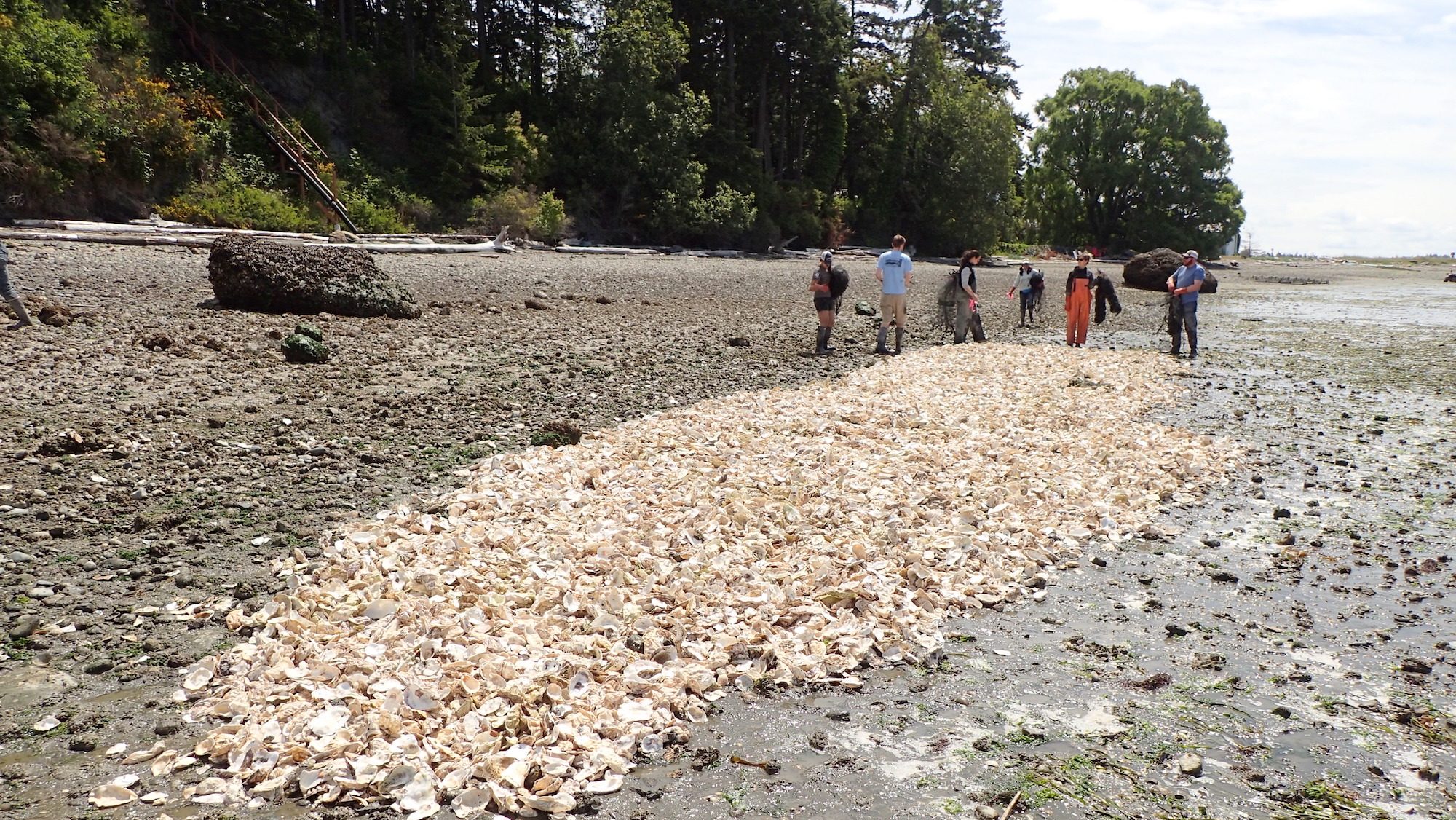
Grossman said it can be frustrating to wait for Western science to catch up to what Indigenous people already know about a place, how to steward local plants and wildlife and whether technologies such as clam gardens “work.”
Indigenous knowledge must be respected for partnerships between Indigenous Tribes and Western scientists to be fruitful collaborations, Donatuto added.
“I think with any project, particularly run by Western-based scientists, there’s an assumption that the knowledge that they hold is the knowledge that exists, which simply is not the case,” she said. “There are multiple ways of knowing. And the knowledge that many Indigenous communities hold about their homelands, by default, is so much of a longer timeframe, so much more nuanced and complex.”
Creating space for Indigenous expertise was one of the strengths of the SNAPP group, Donatuto said.
“Being careful to lift up all of those multiple knowledges is another example of success.”
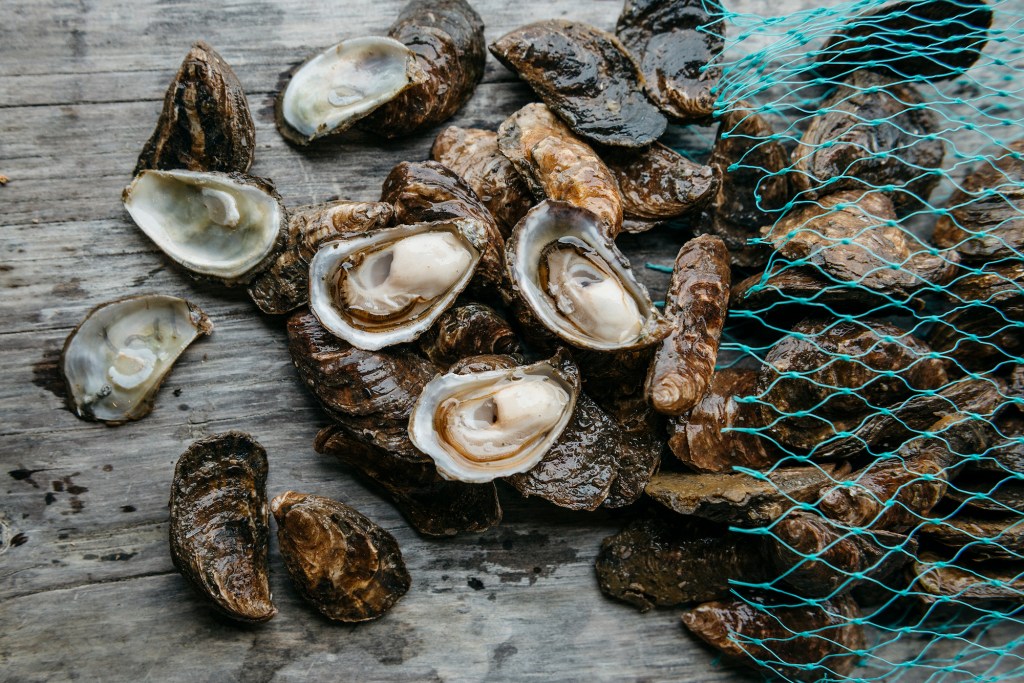



Join the Discussion